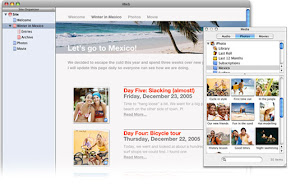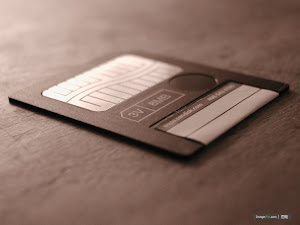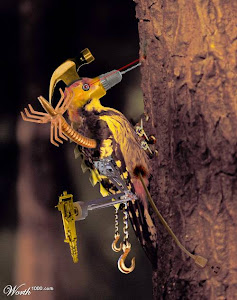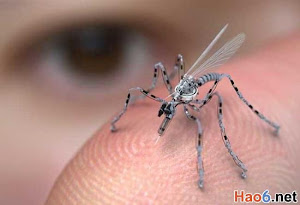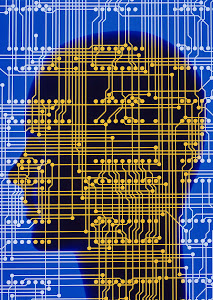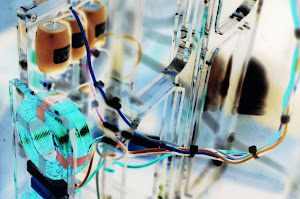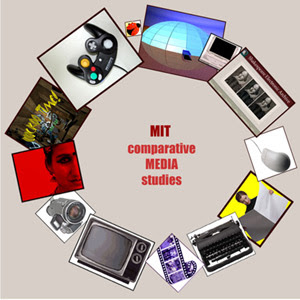Computer-mediated Textuality-Narrative, Author, Knowledge, Self and Power
*Hypertext
Hypermedia includes images, sound, animation and other forms of data.
*The end of books
*Subject of Interest 1: Narrative and Non-linearity
Many critics and hypertext authors have described art work as being "non-linear". Author has predetermined the text of each individual lexia.
*Subject of Interest 2: "The Death of the Author"?
*Subject of Interest 3: The Absence of an End?
*Hypertext Pedagogy
*Cybertext: self-changing text, scriptions and traversal functions are controlled by an immanent cybernetic agent, mechanical or human.
*The murky history of MUDs and MOOs
Multi-user Dungeon(MUD)is one of the most widely studied of cybertext, which is described as " a new kind of virtual parlor game and a new form of communication' based on a computer program that enabled many people to simultaneously" navigate, converse and build... a new form of collaborative literature" together.
"Adventure" program-MUD1 program-Tiny MUD program-multi-author program.
*Subject of Interest 4: Identity
Multi-user programs are one of the most studied phenomenon of the early internet.
*Subject of Artistic Interest 5: Community and Power
Sunday 2 December 2007
lecture seven notes
The Commercialization of the Network
With the development of globalization of the world economy and society. There were lots of changes on economic and cultural.
*The un-commercialized wed
In the last ten years, there were rise of corporate websites, e-commerce,e-tailing, pop-up adverts, the dot.com bubble, the rise of google ad-sense and many other online commercial practices.
*The rise of the network society
It has been described the present era as being a post-industrial, networking, informational culture
1. The importance of the information economy
2. The rise of the network enterprise
3. The effectes of liberalisation and globalisation on the world economy
4. The resultant transformation of work and employment.
*Liberalisation and globalization
Important world financial institutions, for example: world bank, the international monetary fund and the world trade organization.
At the same time, computer and telecommunication systems were beginning to be developed to control and administer these vast geographical enterprises: high finance, in particular, embraced computing and telecommunications early to support their need for speedy decisions and 24 hour global coverage.
*Trade Blocs
*Changes ways of doing business
The globalization of the economy required workforces and management throughout the world to adapt to more competitive conditions: 1. introduction of flexible/insecure labour practices, including part-timing, distance working, flex-timing and contract working. 2. changed from the "traditional" craft-based mode of production to knowledge-based modes. 3.The computerisation of management information systems and the widespread use of databases for controlling all parts of the enterprise; 4.ntroduction of just-in-time manufacturing and inventory control (so that less working capital is tied-up at any one time); and 5. the out-sourcing of goods , materials and services (again to reduce working capital tied-up in overheads)
*The Importance of Property to Capitalism
*The Knowledge-based Economy-- The importance of intellectual property law to the new knowledge economy
*Disruptive Technology? MP3 and file-sharing
MP3 file-sharing community grew up quickly on the internet.
Digital Culture: lawrence lessig and the creative commons
Rifkin: the age of access
The power of gatekeepers in the network society: network is free from traditional power structures. Rifkin, is different kind of power being exercised in network society.
End Note: the commercial web of everything
With the development of globalization of the world economy and society. There were lots of changes on economic and cultural.
*The un-commercialized wed
In the last ten years, there were rise of corporate websites, e-commerce,e-tailing, pop-up adverts, the dot.com bubble, the rise of google ad-sense and many other online commercial practices.
*The rise of the network society
It has been described the present era as being a post-industrial, networking, informational culture
1. The importance of the information economy
2. The rise of the network enterprise
3. The effectes of liberalisation and globalisation on the world economy
4. The resultant transformation of work and employment.
*Liberalisation and globalization
Important world financial institutions, for example: world bank, the international monetary fund and the world trade organization.
At the same time, computer and telecommunication systems were beginning to be developed to control and administer these vast geographical enterprises: high finance, in particular, embraced computing and telecommunications early to support their need for speedy decisions and 24 hour global coverage.
*Trade Blocs
*Changes ways of doing business
The globalization of the economy required workforces and management throughout the world to adapt to more competitive conditions: 1. introduction of flexible/insecure labour practices, including part-timing, distance working, flex-timing and contract working. 2. changed from the "traditional" craft-based mode of production to knowledge-based modes. 3.The computerisation of management information systems and the widespread use of databases for controlling all parts of the enterprise; 4.ntroduction of just-in-time manufacturing and inventory control (so that less working capital is tied-up at any one time); and 5. the out-sourcing of goods , materials and services (again to reduce working capital tied-up in overheads)
*The Importance of Property to Capitalism
*The Knowledge-based Economy-- The importance of intellectual property law to the new knowledge economy
*Disruptive Technology? MP3 and file-sharing
MP3 file-sharing community grew up quickly on the internet.
Digital Culture: lawrence lessig and the creative commons
Rifkin: the age of access
The power of gatekeepers in the network society: network is free from traditional power structures. Rifkin, is different kind of power being exercised in network society.
End Note: the commercial web of everything
Saturday 17 November 2007
lecture six notes
The Body, The Mind and The Computer: ALife, AI, Cyborgs etc.
*What is life? 1. the period between brith and death, the experience or state of being alive.2. life is the quality which makes people, animals and plants different from objects, substances and things which are dead.3. life is everything which is alive. For people, DNA make up the human genome. People have the living systems. DNA is the code of life.
*ALife: Artificial Life
ALife is the study of systems related to life. Artificial life, or a-life, is devoted to the creation and study of lifelike organisms and systems built by humans.
*AI: Artificial Intelligence
*Hive Mind: networks and neural nets
Hive is highly intelligent and capable of learning about its environment.
*What is life? 1. the period between brith and death, the experience or state of being alive.2. life is the quality which makes people, animals and plants different from objects, substances and things which are dead.3. life is everything which is alive. For people, DNA make up the human genome. People have the living systems. DNA is the code of life.
*ALife: Artificial Life
ALife is the study of systems related to life. Artificial life, or a-life, is devoted to the creation and study of lifelike organisms and systems built by humans.
*AI: Artificial Intelligence
*Hive Mind: networks and neural nets
Hive is highly intelligent and capable of learning about its environment.
Lecture five notes
Blogs and Citizen Journalists
The Cult of the Amateur
*User-generated content and citizen journalists
Blog: *offer knoledge, but not an authority
*Trust
*Function as a hub spreading information all together
The Cult of the Amateur
*User-generated content and citizen journalists
Blog: *offer knoledge, but not an authority
*Trust
*Function as a hub spreading information all together
lecture four notes
News in the Age of Computers
*News: pubilc by information
*News relate to techology. From oral to written news, cyberculture = writting media. The controlling of news is very important of news media.
*Techology of written and writting message.
*16th century, westen Europe began the modern news- gathering.
*Printing techology brought about changes in the levels of lieracy and allowed the mass-production of writing for the first time.
*Cultural changes in European society.
*The "Massification" of the media in the 20th century. Cyborg: resistance in futile
*Culture changed in 20th century. Internet into people life. Media was in competition now.
*News: pubilc by information
*News relate to techology. From oral to written news, cyberculture = writting media. The controlling of news is very important of news media.
*Techology of written and writting message.
*16th century, westen Europe began the modern news- gathering.
*Printing techology brought about changes in the levels of lieracy and allowed the mass-production of writing for the first time.
*Cultural changes in European society.
*The "Massification" of the media in the 20th century. Cyborg: resistance in futile
*Culture changed in 20th century. Internet into people life. Media was in competition now.
Consideration of Cyberspace
Cyberspace enter people's common life nowadays. It is amazing to communicate with friends who were in the other parts of word. For example: I use ichat or Skype connect with my friends whose in China. When I talk with them, my body and my mind was separate in some extent. My body is sitting in UK, but my mind is flying back to China. My eyes look the window of computer, my mind was thinking the matter, which happened far from me. But my body was still at home.
It is interesting that this kind of things happened frequently. Cyberspace has entered into common life. This means: the use of internet strengthenthe communication between people and society.
But some people argued, internet will lead people's psychological well-being dropped. It is report that people who often use chat tools and e-mail, always feel loneliness. They contact with family and friends declined. Therefore, the internet brings convenience to people, but in the other hand, it can't instead the face to face communication between people.
It is interesting that this kind of things happened frequently. Cyberspace has entered into common life. This means: the use of internet strengthenthe communication between people and society.
But some people argued, internet will lead people's psychological well-being dropped. It is report that people who often use chat tools and e-mail, always feel loneliness. They contact with family and friends declined. Therefore, the internet brings convenience to people, but in the other hand, it can't instead the face to face communication between people.
lecture three notes
The Birth (and Death) of cyberspace
1. Cyberspace was familiar with real spatial, for example: cities, buildings, which were the metaphors of social structures.
2. Cyberspace made of information, people who can operate information, have great power.
3. Cyberspace was bodiless.
4. Cyberspace was made up with data.
With the developing of information, cyberspace enter people's common life. Internert developed a lot nowadays. It has became to one of the most important media in people's life.
1. Cyberspace was familiar with real spatial, for example: cities, buildings, which were the metaphors of social structures.
2. Cyberspace made of information, people who can operate information, have great power.
3. Cyberspace was bodiless.
4. Cyberspace was made up with data.
With the developing of information, cyberspace enter people's common life. Internert developed a lot nowadays. It has became to one of the most important media in people's life.
Subscribe to:
Posts (Atom)
